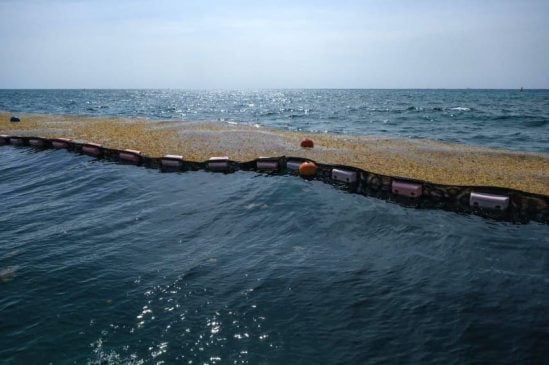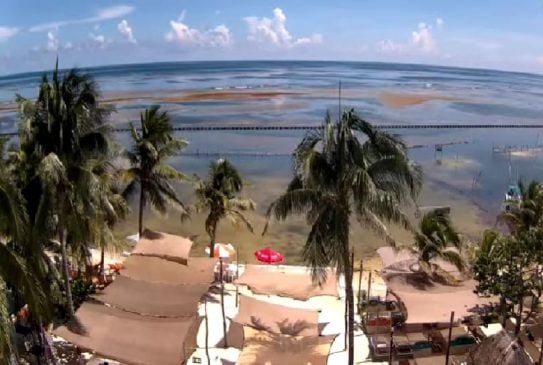Riviera Maya, Q.R. — The Secretaría de Marina says an estimated 37,600 tons of sargassum will arrive along the Quintana Roo coast this year. According to Marco Antonio Muñoz Hernández, Vice Admiral of the Eleventh Naval Zone, of the amount expected, only 7,600 tons has made it to the coast so far.
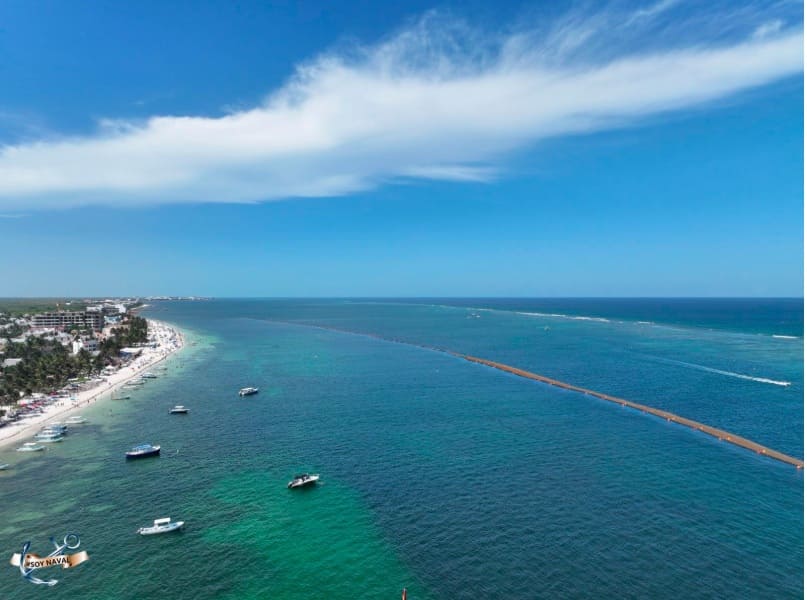
He says as of June 14, approximately 7,600 tons have been collected, representing just one-fifth of the total projected to reach Quintana Roo this season. The Vice Admiral explained that technicians, operational personnel, and specialized equipment are being deployed in coastal areas to contain the seaweed.
“We’re analyzing currents and wind patterns to determine the best way to collect the largest amount before it reaches the beach. Hundreds of people have joined the effort, and we continue to adjust the strategy based on maritime conditions,” he said.

In response to the spread of social media videos showing sailors returning sargassum to the sea, Muñoz Hernández clarified that these actions are part of an operational technique to take advantage of ocean currents to redirect the seaweed to points where it is easier to collect with machinery, preventing it from dispersing in hard-to-reach areas.
The operation, he explained, is under constant evaluation to maximize its efficiency and minimize the environmental impact of sargassum, which continues to pose a threat to both the marine ecosystem and the region’s tourism economy.
Hundreds of people continue to work daily to remove sargassum from the coast. Last week, the state of Quintana Roo organized a mass simultaneous sargassum removal effort. Seven municipalities participated in the June 17 event where thousands of tons of seaweed was removed from municipal beach areas.
Due to the forecast of a mass arrival of sargassum, Alicia Bárcena Ibarra, the Ministry of Environment and Natural Resources, released a statement to understand what is happening. In her statement after a June 10 meeting for the Adoption of the Sargassum Crisis Declaration, she reported on what they have determined.

“So one of the reasons this is happening comes from Brazil and Africa, basically. We’ve completed a study that I’d very much like to share with all of you. So one of the first things we want to do is reach an agreement with Brazil, for example, to ensure we can address the causes of what’s happening there.
“It’s a land-based problem stemming from illegal logging, pollution management, and the contaminants that are arriving. It’s a land-based problem that’s reaching Brazil and then traveling to the Caribbean country.

“We have a geographic system that is following the sargassum, how it is moving every day, which we will gladly share with all of you because it gives us… what the volume expected to arrive in Mexico will be. For example, in 2023, the volume that arrived in Mexico was 60,000 tons, so adapting, this is something very difficult to manage and handle.
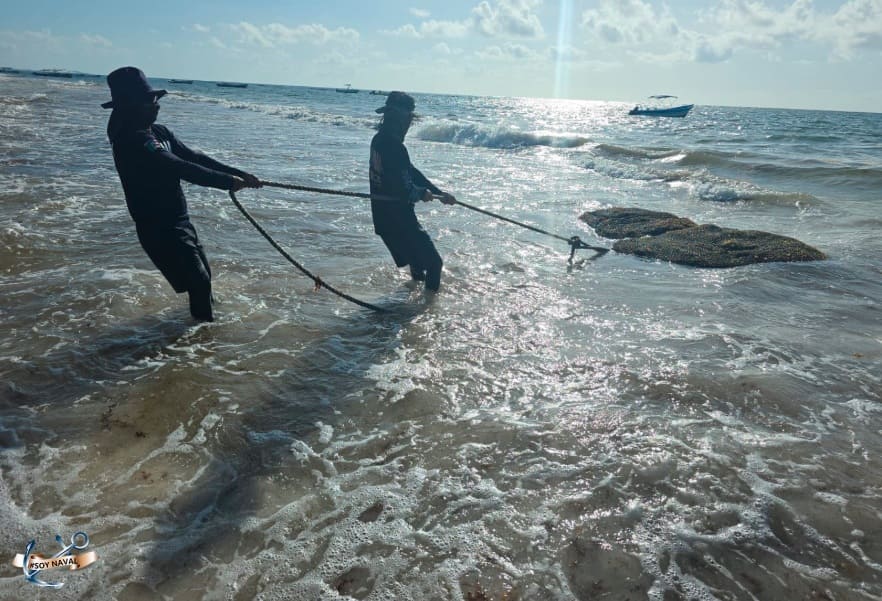
“The Navy, for example, helps us remove sargassum, but the problem is that once it reaches the beach, it becomes toxic; we can’t do anything with it. So it becomes waste, very toxic waste, by the way.
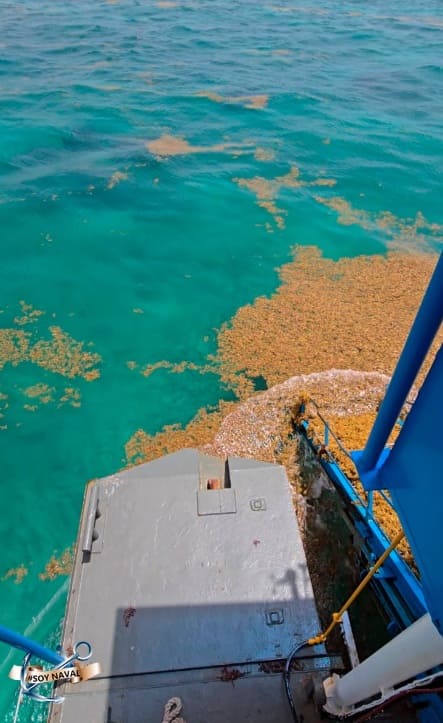
“So the first thing we did was change the regulatory system regarding fishing, so we can fish sargassum at sea; this is the basic thing we have to do. Catching sargassum at sea requires infrastructure that we have to develop together, namely, fishing boats.
“For example, we’re asking hotel owners to pay fishermen and fisherwomen to catch live sargassum and then take it to a port we’ve identified in Quintana Roo, where we want it to arrive alive. It has to be alive for four hours, fresh, let’s say, and then it can be treated in a plant. So I invite you to join us in this effort.
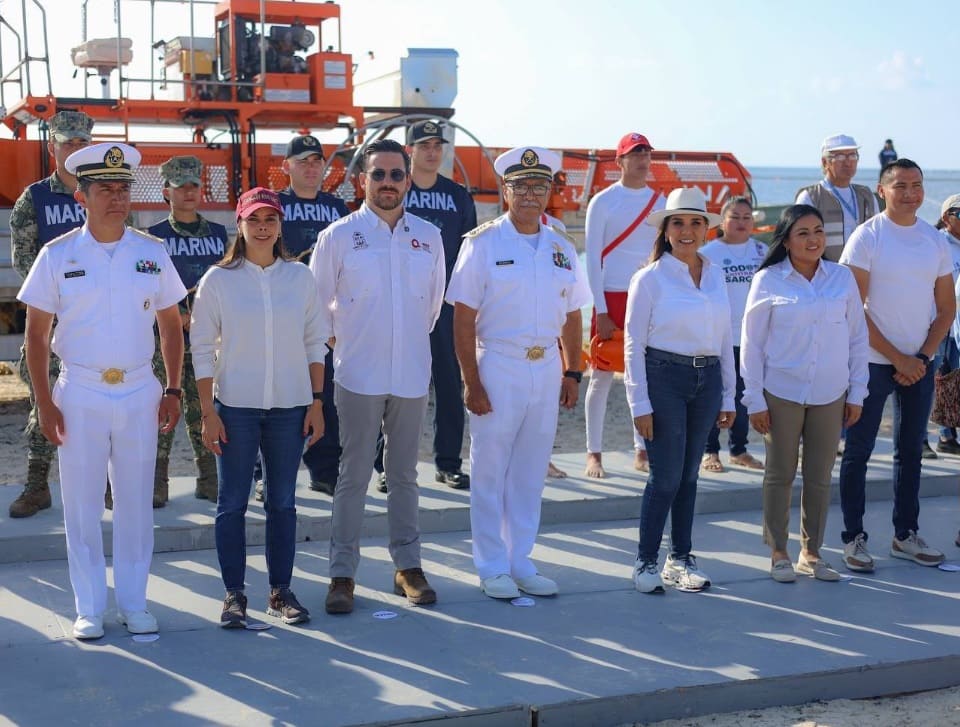
“We bring in hotel owners, we bring in the private sector, and I think we can really do something powerful and new, and it’s very innovative, to have a treatment plant that I think, not a treatment plant, actually, maybe to put it another way, a circular economy model where we can really demonstrate that it’s possible to use waste in a very different way.
“In Mexico, of course, we are fully committed, fully committed. We want to work hand in hand with the Dominican Republic and Costa Rica.”

At the end of May, the federal government funded a scientific research mission with the state of Quintana Roo. A total of 22 researchers set out for two weeks to comb the Mexican Caribbean to study the incoming sargassum. The information will be used to help the state build a biorefinery project.

The biorefinery project, Sargassum Treatment Plant, is in coordination with Alicia Bárcena of the Ministry of Environment and Natural Resources. The goal is to turn the sargassum into a valuable asset by generating chemical compounds derived from sargassum through thermal treatment.








